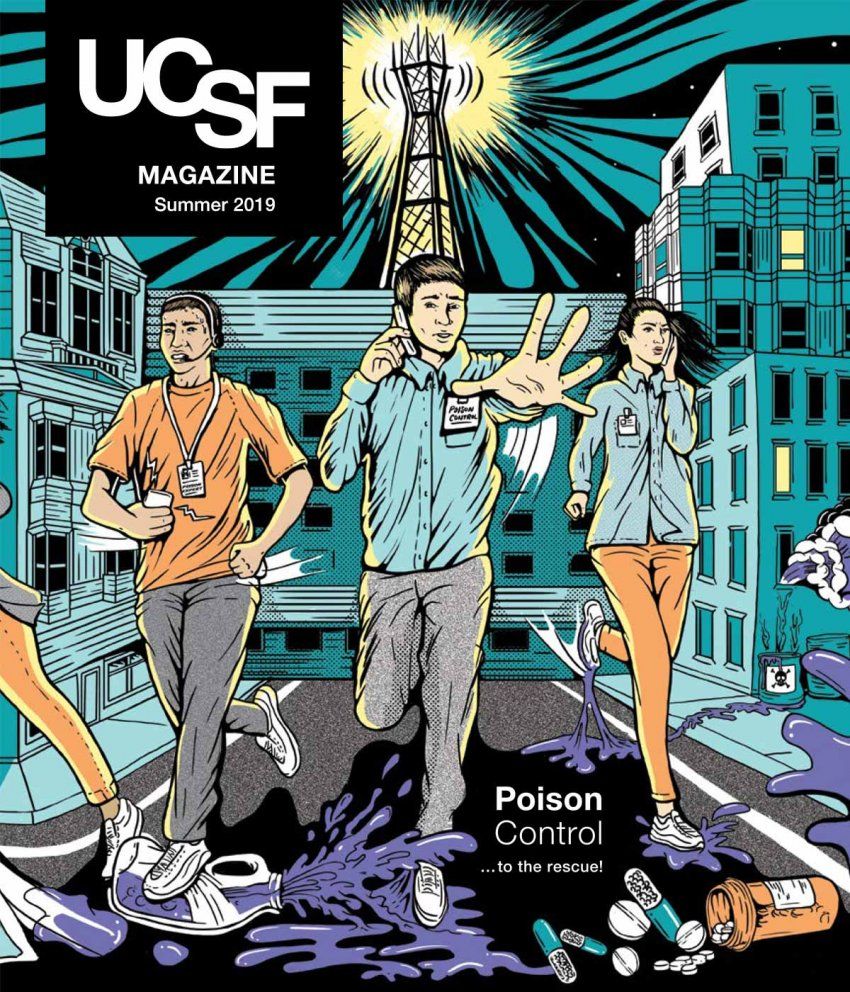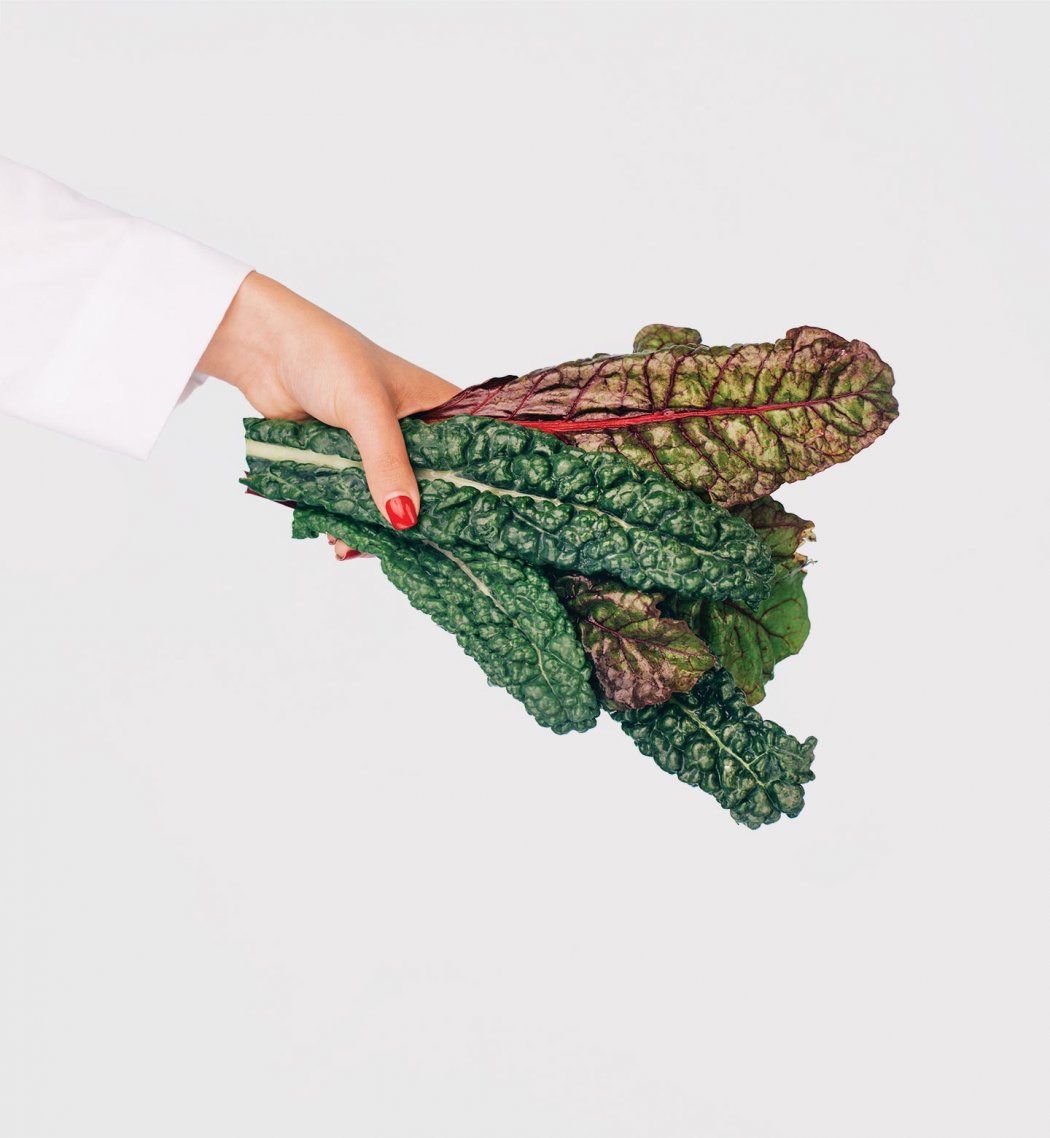Fun Food Facts: How we prepare or cook certain foods can change how healthy they are. Click on the question marks for fun (and nutritious) food facts.
Fun Food Facts: How we prepare or cook certain foods can change how healthy they are. Click on the question marks for fun (and nutritious) food facts.
1.
Start with Skepticism
We all want easy answers, but nutrition science is an imperfect and evolving field. The food research in our newsfeeds is often overhyped and misinterpreted or skewed by human error, scientific bias, and weak methodology. And when it is wrong, the stakes are high.
Take the ’80s advice to follow a low-fat diet. It triggered a billion-dollar industry of low-fat, high-sugar food with little nutritional value (remember SnackWell’s cookies?) and contributed to a public health crisis marked by skyrocketing rates of diabetes. “Telling people to follow a low-fat diet without paying attention to what was in that diet was one of the worst public health mistakes of the last 30 years,” says Frederick Hecht, MD, the Osher Foundation Professor and director of research at the UC San Francisco Osher Center for Integrative Medicine. “We as a field have made huge mistakes. We need to better convey the limitations of current science when providing advice.”
Our best advice to you: Take every piece of nutrition advice with a grain of salt.
2.
Beware the Buzzwords
Companies excel at using healthy-sounding but meaningless buzzwords to get you to buy their products. They know this “health halo” can trick our brains into thinking their products are better for us than they really are. Of course, the best way to avoid this deception is to skip packaged foods altogether. But if you must buy the box or bottle, look for the facts behind the hype.
Find out what these buzzwords really mean by clicking on the question marks.
Find out what these buzzwords really mean by clicking on the question marks.
Skip the Supplements?
Supplements are big business. But unless you know you have a specific nutritional deficiency, supplements could be doing more harm than good. We just don’t know.
Unlike prescription medications, the FDA has few regulations for supplement manufacturers. In fact, supplements are considered safe by the FDA until proven otherwise.
“It’s not that all supplements are bad,” says Joanna Hellmuth, MD, MHS, a neurologist at the UCSF Memory and Aging Center. “It’s just that there are no protections in place at the moment to inform the consumer one way or the other.”

75%
of adults in the U.S. take dietary supplements

50,000
supplements are on the market today – over 12x the number available 25 years ago
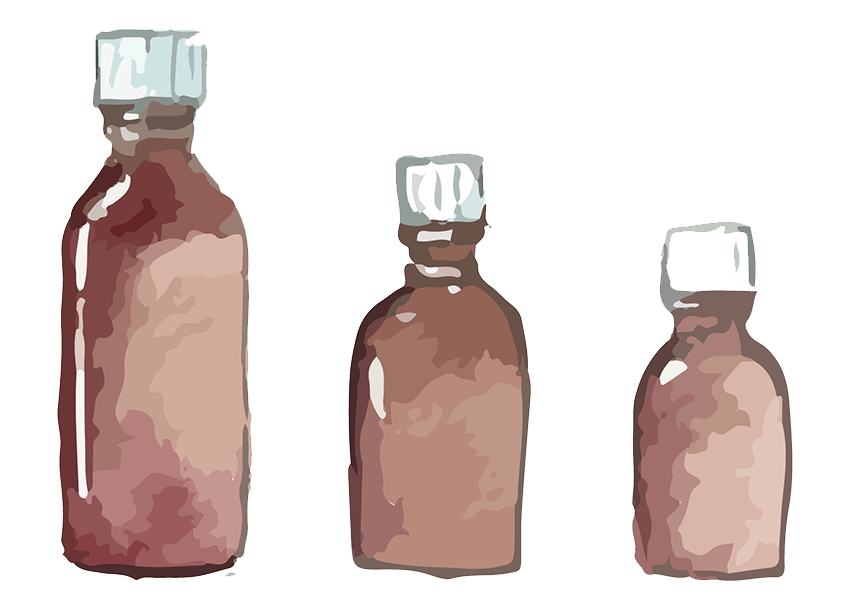
$11.6 billion
is the predicted global market by 2024 for the fast-growing sector of “brain health” supplements
3.
Treat Food as Medicine
More than half of Americans are on at least one prescription medication, and most of our homes are bursting with over-the-counter pills, ointments, and syrups. It turns out, however, that your kitchen pantry and fridge are also key – as long as you fill them with the right stuff.
That’s why UCSF family physician Daphne Miller, MD, not only asks all her new patients to bring in their vitamins and prescriptions, but also dives into what she says really matters: “We talk about what they eat.”
Miller, who spent years traveling and researching the healthiest regions around the globe, wrote her first book, The Jungle Effect, on the traditional diets and recipes that had kept those communities healthy for generations. In the process, she came to see the dramatic link between certain diets and a striking lack of chronic diseases, including heart disease, depression, diabetes, colon cancer, breast cancer, and prostate cancer.
The “food-as-medicine” movement Miller represents is hardly new. But recent studies by the renowned UCSF food-policy expert Hilary Seligman, MD, MAS ’06, and her collaborators have begun to rigorously evaluate outcomes of programs through which doctors “prescribe” increased access to healthy foods. In 2017, the UCSF team found that sick patients who got special meals for six months suffered less depression, were less likely to make trade-offs between food and health care, and were more likely to stick with their medications. (See “Understand the Impact of Food Insecurity” below.)
While the effectiveness of such programs needs more study, researchers from Tufts University have calculated that providing insurance coverage for healthy food to patients could prevent as many as 3.3 million cardiac conditions and save more than $100 billion in health care costs.
What’s more, the idea of fighting chronic disease through diet has already entered the mainstream. And perhaps no disease is more closely associated with “food as medicine” than cancer. According to UCSF integrative oncologist Donald Abrams, MD, nearly half of all cancer patients pursue popular diets, such as the alkaline, Paleolithic, ketogenic, vegan, or macrobiotic regimens, in the hope of improving their survival and preventing a recurrence.
However, writing in the online journal Oncology, Abrams and his co-authors caution that these diets can introduce nutrient insufficiencies or even eliminate foods proven to be beneficial for cancer prevention and general health. They point out that most of these diets have positive aspects, but that physicians should encourage dietary changes that emphasize the positive features of these popular diets while correcting for their faults (see “Dietary Rx” below).
The bottom line? Whatever you have in your medicine cabinet, what’s on your grocery list matters, too.
Dietary Rx
Cancer-nutrition advice from integrative oncologist Donald Abrams, MD, avoids the pitfalls of popular diets. The rest of us could benefit as well.
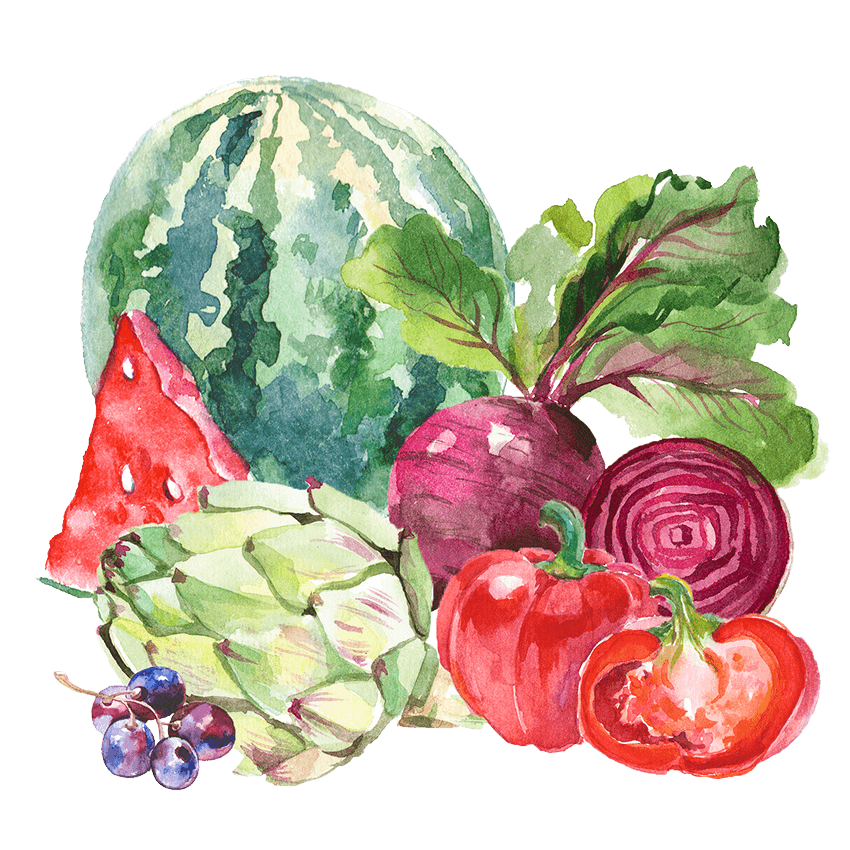
More Fruits & Veggies
Eat five to nine servings of produce a day (more vegetables than fruits).
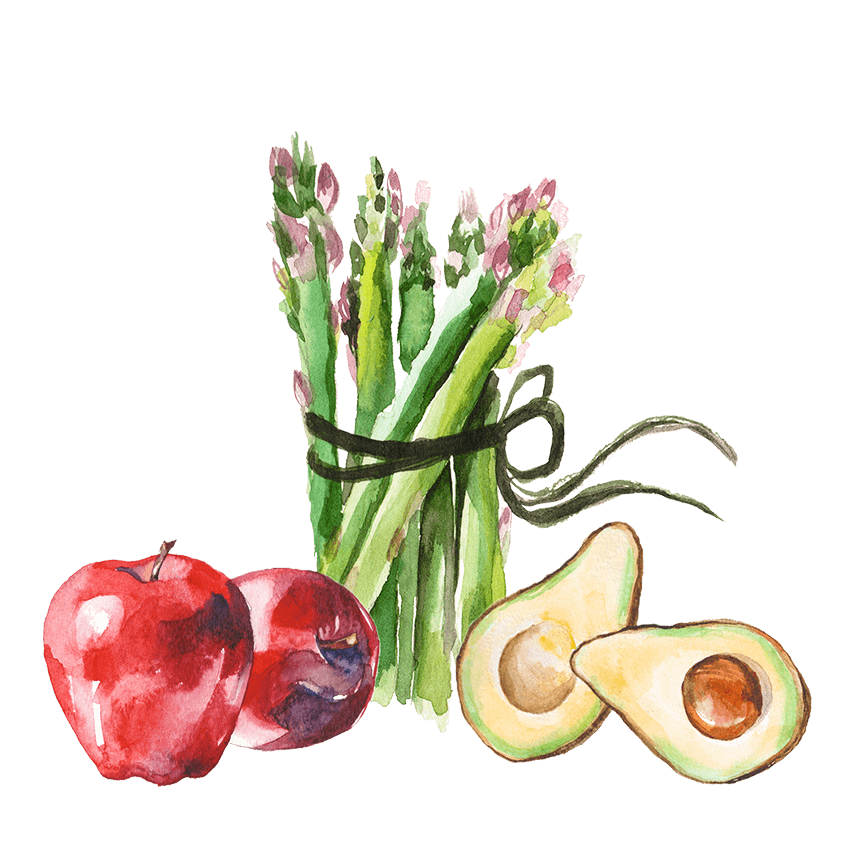
Buy Organic
Buy organic produce if possible and your budget allows.
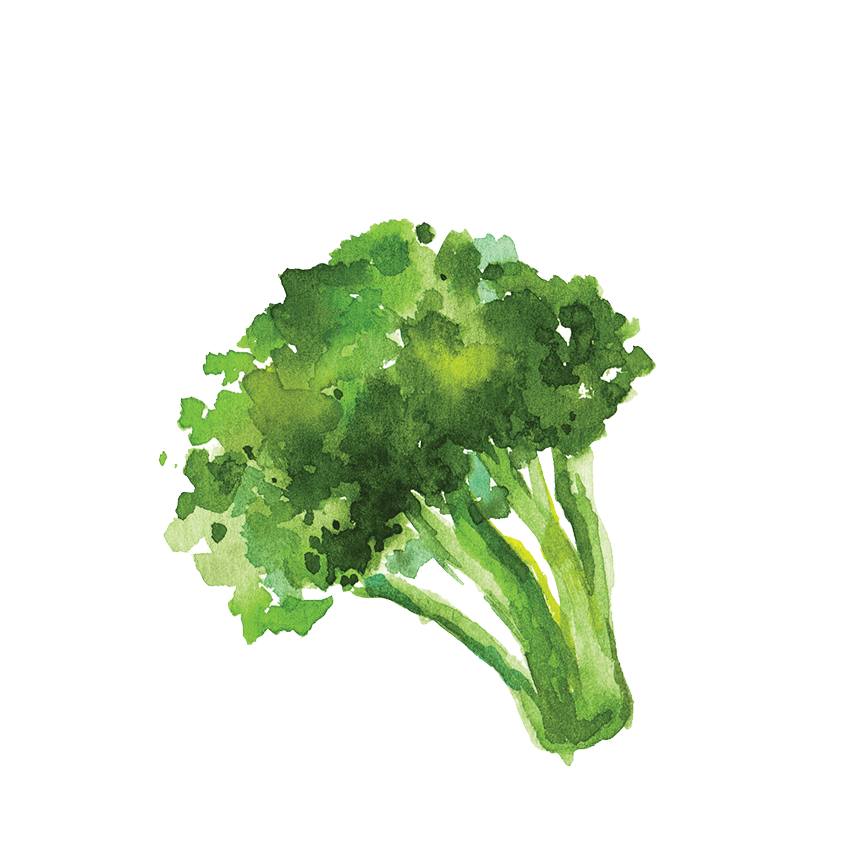
Think Cruciferous
Eat cruciferous vegetables (broccoli, cauliflower, brussels sprouts, kale, etc.) every day.
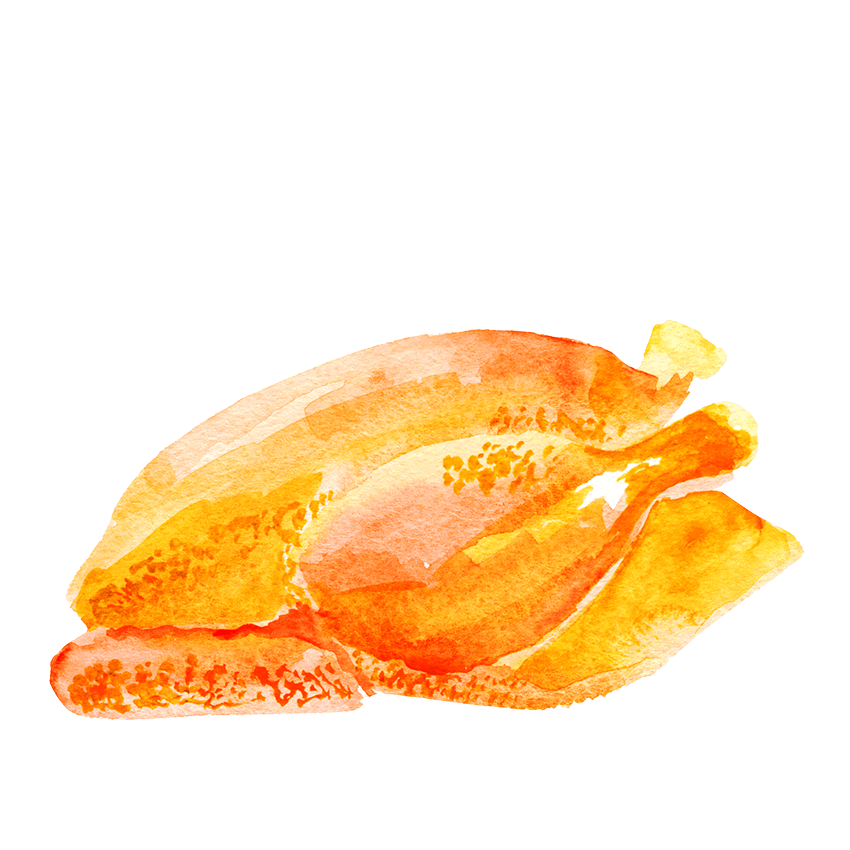
The Whole Chicken
Buy organic chicken and go easy on the eggs.
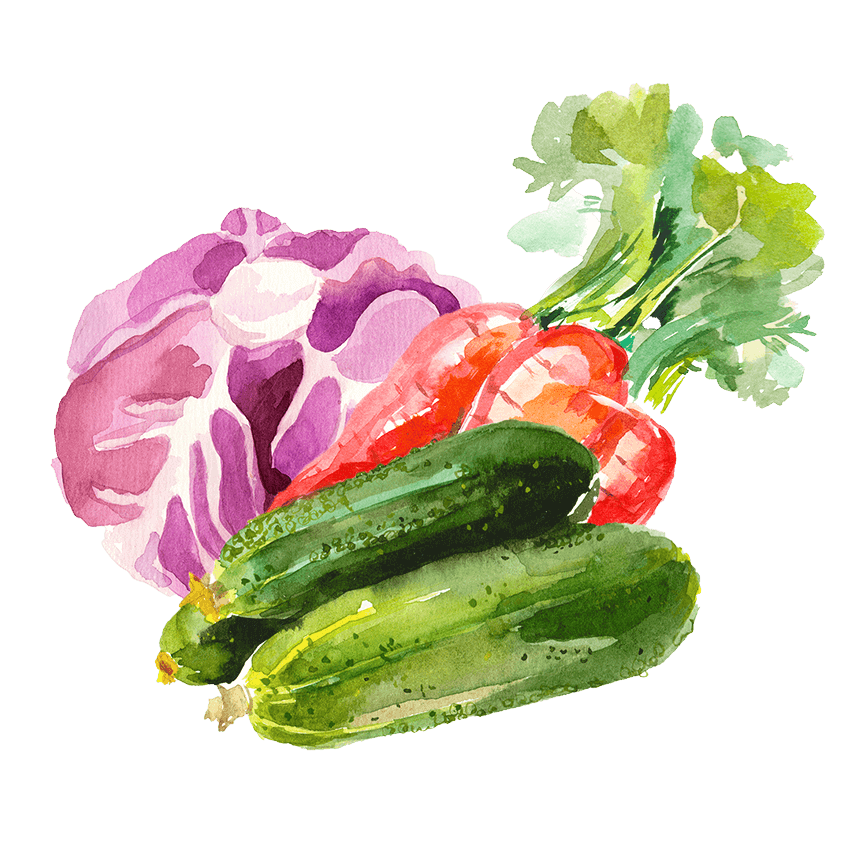
No Soggy Veggies
Don’t overcook vegetables – steam, blanch, or stir-fry them.

Embrace Soy
Eat unprocessed soy (tofu, soy beans, soy milk) but not processed soy like fake cheese or meats.

Things to Avoid
Limit meat consumption and avoid processed meats and refined sugar.

Spice Things Up
Incorporate turmeric into your diet as an anti-inflammatory.
4.
Sleep More
After a restless night, do you find yourself craving a bagel or muffin or even a donut? The problem is neurological, says Aric Prather, PhD, an associate professor of psychiatry who studies how sleep affects health.
Sleep-deprived brains do a poor job regulating appetite and impulses. Studies show that when we’re tired, we crave not just more foods but also those that are higher in fat, sugar, and salt – foods we know are bad for us but are evolutionarily primed to love. Prather’s lab recently found, for example, that people who sleep five hours or less a night drink 21 percent more sugary drinks than people who sleep at least seven to eight hours. So don’t blame your lack of willpower when you’re blearily facing the fridge. Instead, consider ways you could get more shut-eye. Understand that this is your brain on too little sleep:
See how different areas of your brain react to sleep deprivation by clicking on the question marks.
5.
Ditch Weight-Loss Diets
Deny yourself. Lose weight. Feel great. That’s what every fad diet promises. But science tells us otherwise, says Ashley Mason, PhD, a UCSF assistant professor of psychiatry. Dramatically restricting calories, she says, changes our brains and bodies in ways that make it easier to pack on the pounds – a biological reality that is no match for willpower. So while extreme dieters can lose weight in the short term, they gain most of it back within a few years. What’s more, weight loss isn’t the only yardstick with which to measure our health. If your goal is wellness, you’re probably better off ditching diets altogether, Mason says. Instead, focus on improving the quality of your food by buying whole ingredients (think produce, nuts, and other foods that don’t need labels) and cooking at home.
6.
Restrict When You Eat
Want to fend off disease and have more energy? Try eating within an eight- to 10-hour window, says guest expert Satchin Panda, PhD, a professor at the Salk Institute, an adjunct professor at UC San Diego, and a worldwide expert on circadian rhythms research. Here’s why:
Organ Clocks
Almost every organ has a circadian clock, a 24-hour internal timing system that tells our systems when to wake, sleep, eat, and perform other functions. A growing body of research suggests that for optimal health, we need to abide by these innate rhythms.
Rest is Best
Our metabolism’s circadian rhythm primes us for food intake in the daytime. The pancreas cranks up insulin secretion, for example, and the gut prepares to absorb nutrients. Then, just as the brain needs sleep, our digestive organs need downtime to repair and rejuvenate.
Disruption and Disease
Shift workers often experience circadian rhythm disruption, and correlation studies worldwide show that this can predispose them to obesity, diabetes, and heart disease and increase their risk for cancer and depression. Panda has also shown that mice who ate within an eight- to 12-hour window did not succumb to disease – even though they were fed a high-fat, high-sugar diet.
Out of Whack
Eating late can cut into the time our stomach, liver, intestines, and other organs need to cleanse, which is about 12 to 14 hours. Even that handful of nuts before bed can take four to five hours to digest.
Avoid Gut “Jet Lag”
Panda says it’s also important to choose and stick to a consistent eating window, every day, so the body knows when to expect food. Editor’s note: Since this story was published, a new study from UCSF showed that time-restricted eating does not work for weight loss.
7.
Practice Mindful Eating
For all the time we spend buying, preparing, anticipating, and seeking advice about food, we give surprisingly little attention to eating it.
“Eating is most often unconscious and automatic,” says Elissa Epel, PhD, a UCSF professor of psychiatry. We eat while driving, while watching TV, while browsing our phones or checking our email.
What if we just, well, ate? “What people find when they focus on the experience of eating is they actually feel more pleasure and more satisfaction. And they are less likely to overeat!” Epel says. Mindful eating teaches us to appreciate the lima bean or the broccoli floret; it shows us we can savor a slice of pie and not yen for another. But can it really make us healthier?
Epel and Frederick Hecht, MD, director of integrative medicine research, and their UCSF colleagues are finding that the answer is yes. In a clinical trial of 194 obese adults given guidance on diet and exercise, those who also received mindfulness training ate fewer sweets and reported significantly less compulsive eating than those who didn’t get the training. A year later, the mindfulness group had greater increases in HDL (“good”) cholesterol and greater decreases in blood sugar and triglycerides (blood fat) – all markers of improved metabolic health.
“Just being aware can have a profound effect on eating behavior and risk for diabetes,” says Rachel Radin, PhD, a postdoctoral scholar who helped analyze data from the trial. Awareness includes noticing not just how foods taste, smell, look, feel, and sound, but also what we believe and feel about them. When we open the refrigerator, do we feel pangs of hunger – or are we just bored?
Andrea Lieberstein, MPH, a registered dietician and mindfulness instructor, says “You’re learning to check in with yourself in the moment. This allows you to make the conscious choice to eat in a way that is both pleasurable and guilt-free.”
8.
Feast with Family
It’s no secret that sharing home-cooked food is healthier and cheaper than dining out. But did you know that family meals impart mental and emotional benefits, too? For instance, studies link regular family meals to lower rates of depression and eating disorders, higher self-esteem, and better academic performance among kids and teens. So go ahead – gather your loved ones around the table and let the connection and conversation flow.
9.
Don’t Denigrate Dessert

“My teacher told us that sugar causes you to get a disease where you’re going to need a shot every day. I don’t want a shot, so I’m not going to eat my ice cream.”
That’s the lesson the 5-year-old daughter of Sara Buckelew, MD, MPH, brought home from kindergarten one day. Buckelew, medical director of the Eating Disorders Program at UCSF Benioff Children’s Hospitals, says it’s just one example of the unintentional messages embedded in how we talk about food. Rather than expressing shame or negativity, “we should be sending messages about the importance of variety and nourishing your body,” she says.
“The problem is that dessert is now occurring all day long, every day.”
“I’m all for dessert, as long as it’s recognized as a treat and something special,” says nutritionist and researcher Andrea Garber, PhD, chief nutritionist for the Eating Disorders Program at UCSF Benioff Children’s Hospitals. Garber emphasizes that it’s not good for parents to be too restrictive, since children whose parents apply more external controls have been shown to eat significantly more sweets than other kids when their parents are not present. “Those control strategies backfire with our kids, and they backfire on us.”
“Sometimes it’s important to have a slice of apple pie. You’re human, and it’s great to share this experience with the people you love and enjoy this moment.”
Darya Rose, PhD ’10, UCSF neuroscience alumna and healthy-lifestyle author, blogger, and podcaster, says that framing different foods as “good” or “bad” sets up a destructive dynamic that relies on willpower. “And when you’re using willpower, eventually you’re going to lose. When you realize that there are all these valid reasons to eat different foods – including grandma’s pie – it can help break down that food moralizing and establish a healthier relationship with food,” she says.
10.
Get Kids to Love Healthy Eating
Advice from Katie Ferraro, MPH, an associate clinical professor of nutrition in the UCSF School of Nursing, a specialist in baby-led weaning, and a mother of seven children, including quadruplets and infant twins:
Strive for variety
Research shows the more textures and flavors kids are exposed to early in life, the greater food acceptance they’ll display down the road.
Try to start early
Some flavor compounds are transmitted through breast milk. If a mother mixes up her diet while breastfeeding, the baby’s future palate may benefit.
Model diverse tastes
Data show picky eaters tend to come from households where parents have limited variety in their diet. Broadening your food horizons will encourage your kids to do the same.
Cook with your kids
Start as young as you can. Have them mix, chop, sprinkle, stir. If they help prepare a meal, they will be more inclined to eat it.
Consider baby-led weaning
Starting at 6 months, infants have the capacity to feed themselves. If you combine self-feeding of solid foods with purees, your child will experience myriad textures, tastes, and foods and develop the ability to listen to their own hunger and fullness cues. Evidence shows this weaning strategy is just as safe as spoon-feeding as long as parents have received proper instruction.
Click the question marks for baby-led weaning tips.
Click the question marks for baby-led weaning tips.
Try and try again
Some babies need to try a new food about 10 to 15 times before they’ll like or accept it. Try offering the same foods prepared in different ways – boiled, roasted, baked, broiled.
Prepare for setbacks
Some degree of picky eating is inevitable, starting around age 2.
11.
Understand the Impact of Food Insecurity
You may or may not be the healthiest eater. But most people at least have access to healthy options: a supermarket in their neighborhood; reliable transportation to get there and back; and the disposable income to afford fresh, whole foods.
For more than 40 million Americans, however, the choices are different. Parents choose to skip meals so their kids can eat. Elders choose between paying for medications and paying for groceries. Cheap, processed, packaged foods are often their only choice – and many of these are so unhealthy that they lead to entire communities of people who are both malnourished and obese.
Government food-aid programs and community food pantries play an important role in addressing such food insecurity, but they are ill-equipped to make fresh and healthy foods more available. However, another approach is showing promise: “food pharmacies” that provide patients with free, nutritious groceries during clinic visits, as well as guidance on nutrition, recipes, and cooking that are tailored to patients’ specific medical needs.
According to Hilary Seligman, MD, MAS ’06, a nationally recognized expert on the intersection of food insecurity and health, such programs can improve health and lower medical costs. “Your mother probably taught you that nutritious food makes you healthy. But for a low-income household, affording these foods turns out to be not so easy. Here is where food pharmacies might step in and make a big difference – both in helping people stay healthy and in reducing costs of care,” says Seligman.
UCSF is engaged in addressing food insecurity beyond the walls of the clinic as well. In 2015, Seligman launched EatSF, a program that provides free vouchers for fruits and vegetables to low-income individuals and families. The program has provided produce to more than 10,000 people in San Francisco and has become a national model for creating equitable local food systems.
“My goals for EatSF are big, but the model is quite simple,” says Seligman. “We are supporting economic activity in underserved neighborhoods and making fruits and vegetables available in the city’s food deserts. At the same time, we are reducing food insecurity and improving health.”
Helping Students Access Healthy Food
Food insecurity among college students is a growing problem nationwide, driven largely by the spiraling costs of higher education. Across the University of California, 44% of undergraduates and 26% of graduate students report experiencing food insecurity. To destigmatize this reality and assist struggling students, UCSF launched the Basic Needs & Food Security for Students program.
“I always assumed people who were getting food stamps would be like those you see on the streets in San Francisco,” says Molly, a UCSF student who uses Basic Needs & Food Security for Students program. “And I know a number of other classmates who use government assistance. It’s changed my mindset about what food insecurity is.”
600
UCSF students receive CalFresh benefits, the food-assistance program formerly known as food stamps.
320
students per week “shop” at UCSF’s Student Food Market, which distributes free, fresh produce and other food.
70%
of UCSF students have downloaded a UCSF app that connects them to food left over after catered campus events.
12.
Embrace the Future of Food
These trends just might shape what and how we eat in the years ahead.
Personalized nutrition
Nutrition, it turns out, is incredibly idiosyncratic. Culture, environment, genetics, body composition, and the gut microbiome all play roles in how individuals process calories and nutrients. The variables are daunting, but a data-driven future promises to show each of us how we, and we alone, should eat.
Even today, oncology and integrative dietitian Natalie Ledesma, MS, is using personalized testing to advise patients in her private practice. She tests certain patients’ blood, urine, stool, and saliva – and even looks at their genomes before making suggestions. For patients who can benefit from all this data, she says, “I am going to push the envelope. I think we will continue to personalize nutrition regimens more and more, and genomics will become a more commonly used nutritional tool.”
Integrative dietitian Danica Cowan, MS, agrees with Ledesma. She also predicts that it will be quite some time before this approach will be mature enough to benefit the general population. “It’s important to remember much of the science isn’t there yet.” For now, she says, “most people will see far more benefit from simply eating more fruits and vegetables and a lot less junk.”
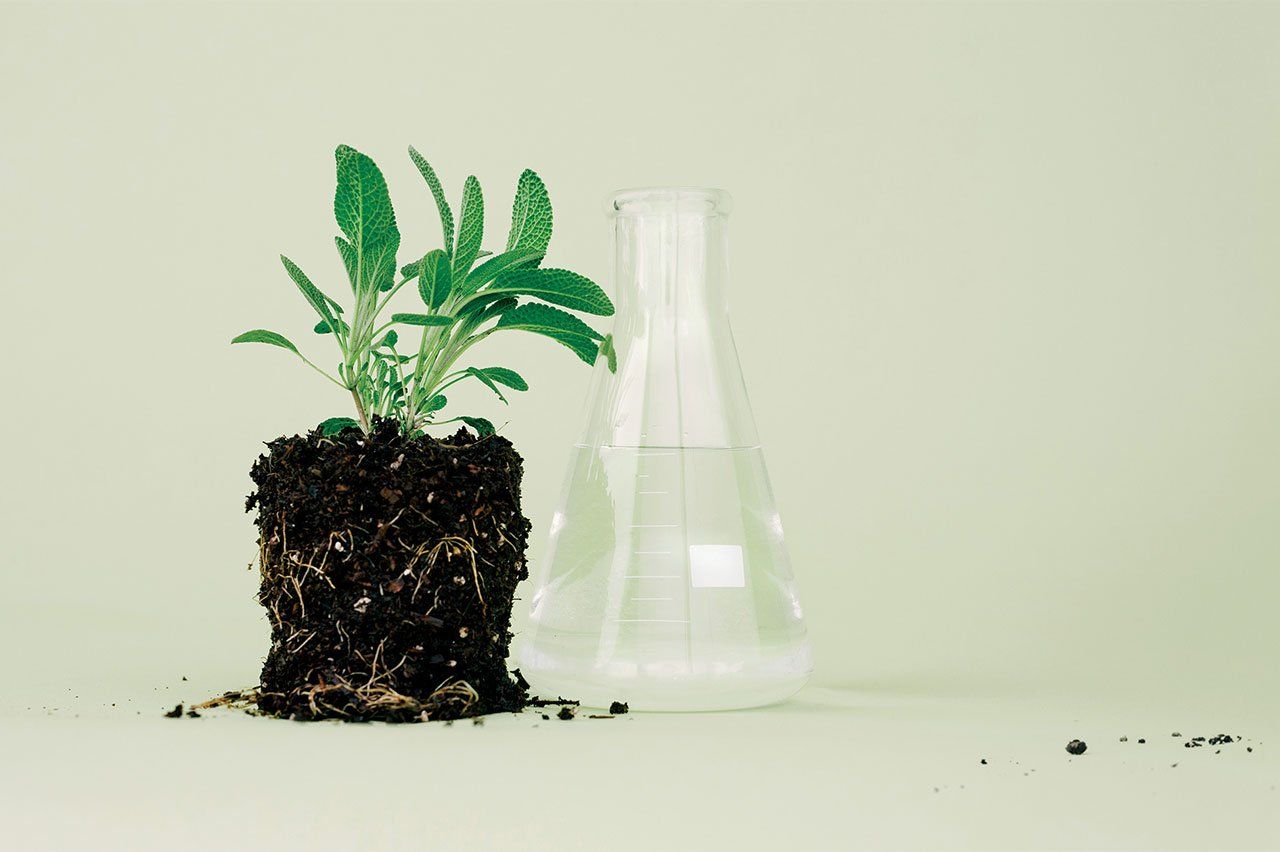
Researchers are discovering that soil with a rich diversity of microbes – lots of laborers carrying different nutrients – leads to the most nutrition-packed food.
MDs with culinary cred
Most primary care providers have relatively little training in nutrition, but that’s beginning to change.
Training for medical students in “culinary medicine” is gaining ground nationally. The approach imparts skills ranging from cooking, shopping, budgeting, and label-reading to nutritional counseling and understanding food-assistance programs.
Nutritionist and professor Andrea Garber, PhD, helped pilot such a course at UCSF over the last two years, hiring professional chefs to guide students as they cook healthy meals, while also covering chemical and metabolic pathways and exploring case studies on nutrition and chronic disease.
What might a future with more kitchen-savvy doctors look like? Imagine primary care providers who ask patients about their shopping habits and cooking skills. Replace conversations about saturated fat and cholesterol with real-world tips about vegetables and grains. Picture low-income patients receiving a map to their local food pantry. In this future world, obesity, diabetes, and hypertension rates all decline, and medical costs drop as well. And the doctors who learned to cook back in medical school? They’re likely quite a bit healthier, too.
Sustainability
“Today we are in the late stages of a catastrophic meltdown in global biodiversity, unprecedented in human history, almost entirely driven by global demand for meat, fish, and dairy foods,” says Patrick Brown, a UCSF postdoc alumnus who is the founder and CEO of the buzzy plant-based-meat startup Impossible Foods.
The fact is, the future of food itself is inextricably linked to the health of the planet. Environmental degradation threatens the healthfulness of foods; at the same time, food production inflicts incredible damage on the planet. And most ominously, climate change is certain to increase global hunger and reduce agricultural biodiversity in the next few decades.
Daphne Miller, MD, a UCSF clinical professor who founded the Health from the Soil Up initiative and teaches medical students about aligning agriculture and conservation with human health, suggests three steps for anyone who wants to eat more sustainably. “Step one: Just eat more vegetables, fruits, and whole grains – whole foods that are as unprocessed as possible. Step two is to choose foods that are produced in the United States,” she says. Fewer food miles means a lighter footprint; it also supports more diversified, healthful agriculture in the U.S. Step three: Get curious about how your food is grown. While the “organic” label is a helpful guide, you want food grown in soil that has been enriched with cover crops and has not been overly tilled or treated with chemicals.
“The boundaries of health,” she says, “extend beyond our bodies to the environment.”
Contributors: Ariel Bleicher, Susan Godstone, Dresden Joswig, Anne Kavanagh, Silver Lumsdaine, Cyril Manning, Jon Miller, Mika Rivera
All Photos: Anastasiia Sapon | Food Stylist: Jillian Knox
